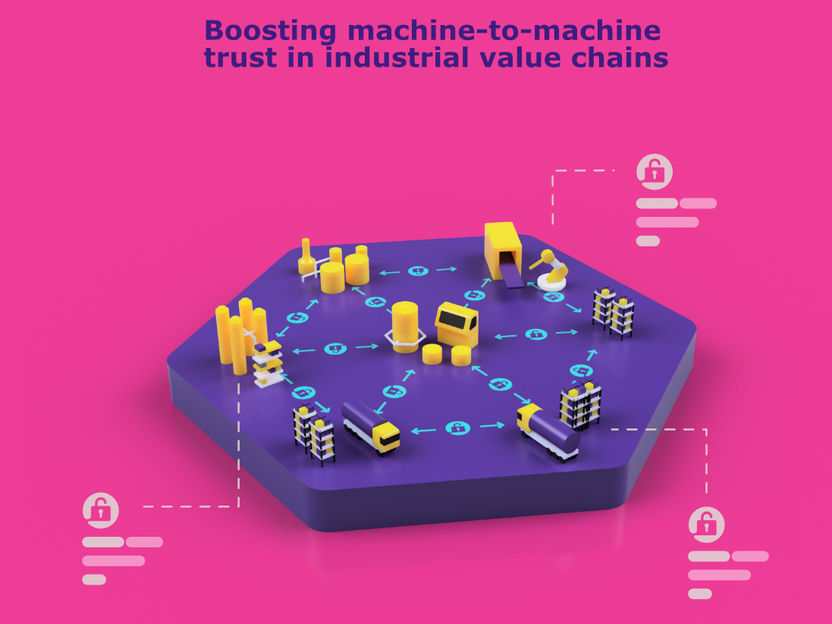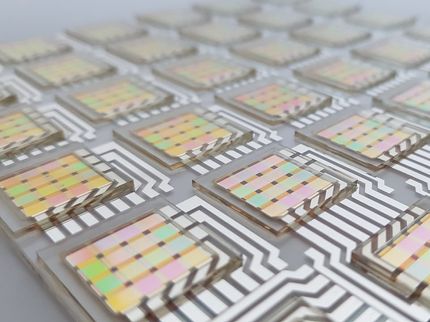Siemens and Merck Collaborate to Boost Machine-to-Machine Trust in Industrial Value Chains
Advertisement
Merck and Siemens plan to develop and implement solutions that offer unprecedented levels of digital trust in machine-to-machine (M2M) connected industrial value chains. This would help industrial customers to comply with stricter regulations in the value chain in different countries and enable disruptive business models in a variety of industrial sectors, ranging from the food and beverage, pharmaceuticals and electronics industries to the automotive industry.

Both companies kick off developments to ensure quality and trust in a machine-to-machine (M2M) connected world. The aim is to provide instant accessibility to quality and safety information with a single source of truth to enable disruptive business models
Merck KGaA
“At Merck, we have been guardians of quality for centuries and now, we aim to transfer this value proposition to the digital machine-to-machine connected world,” said Laura Matz, Chief Science and Technology Officer of Merck. “Our collaboration with Siemens has clear potential to disrupt quality control and assurance operations across all kinds of industries. Enabled by an unprecedented level of digital trust, certified machine-to-machine cyber-physical communication will not only boost quality, transparency and traceability of products along value chains but will also enable new business models.”
“Value chains and product lifecycles must become more transparent and sustainable. That is why together with Merck we will develop a completely new digital solution that enables "trustworthy" communication between machines, for example, for the exchange of production data and laboratory data. Our customers will be able to produce more efficiently while ensuring sustainability and quality of their products in a wide range of areas – from personalized medicine to food and beverages to high-tech electronics,” said Cedrik Neike, Managing Board Member of Siemens AG and CEO of Digital Industries.
Due to the increasing complexity of value chains, the current traceability, transparency and quality control requirements are growing exponentially. To drive forward the Industrial Internet of Things (IIoT), which is rapidly transforming value chains and manufacturing across all industries, there is a pressing need for effective and secure data and information exchange. Nevertheless, within the current IIoT context, there is a lack of M2M communication regarding the quality status of many products. Consequently, the targeted solution aims to provide a framework for an efficient M2M interaction.
The targeted solution would provide all parties involved in the value chain with an immediate single-source-of-truth access point to trusted data and enable new levels of traceability, transparency, safety, and quality of industrial products. This could eventually allow customers to generate disruptive business models such as pay-per-part or pay-per-performance, which would be driven by machines in the IIoT.
Cutting-edge technologies such as smart contracts, tokens, blockchain, and industrial edge computing can anchor physical objects to a digital identity and thus ensure transparency and authenticity of information and physical objects. This promotes originality and helps prevent the creation of counterfeit products.
Merck and Siemens are envisioning an end-to-end solution that will enable customers to rely on one immutable single source of truth between production and laboratory quality control. Within the scope of the collaboration, Siemens plans to build an object-centric IIoT data ecosystem in which objects can communicate by sharing data within a trusted environment. Both companies also plan to combine the crypto anchor technology portfolio of Merck with Siemens’ trusted traceability system (an end-to-end genealogy system for products) to make them interoperable based on blockchain technology.
The solution is planned to be scalable across the entire value chain. Stakeholders are to have access to all data across the entire lifecycle of a product – from product design to use by the end consumer. This would simplify processes and significantly increase efficiency across industries.



















































